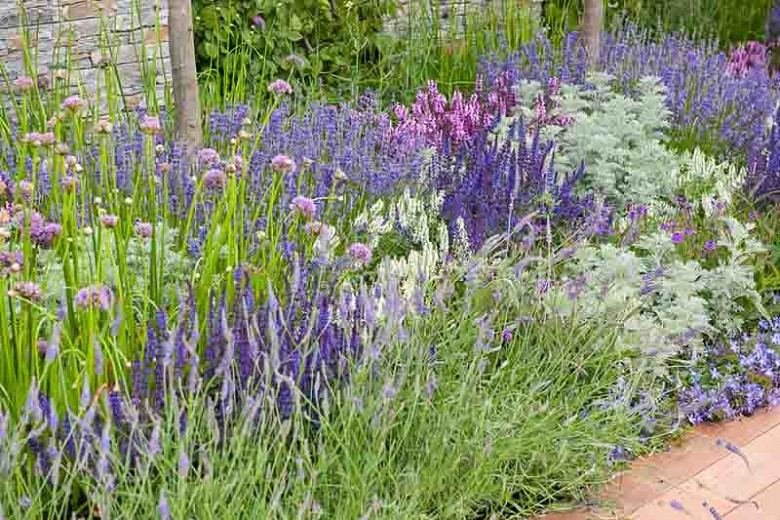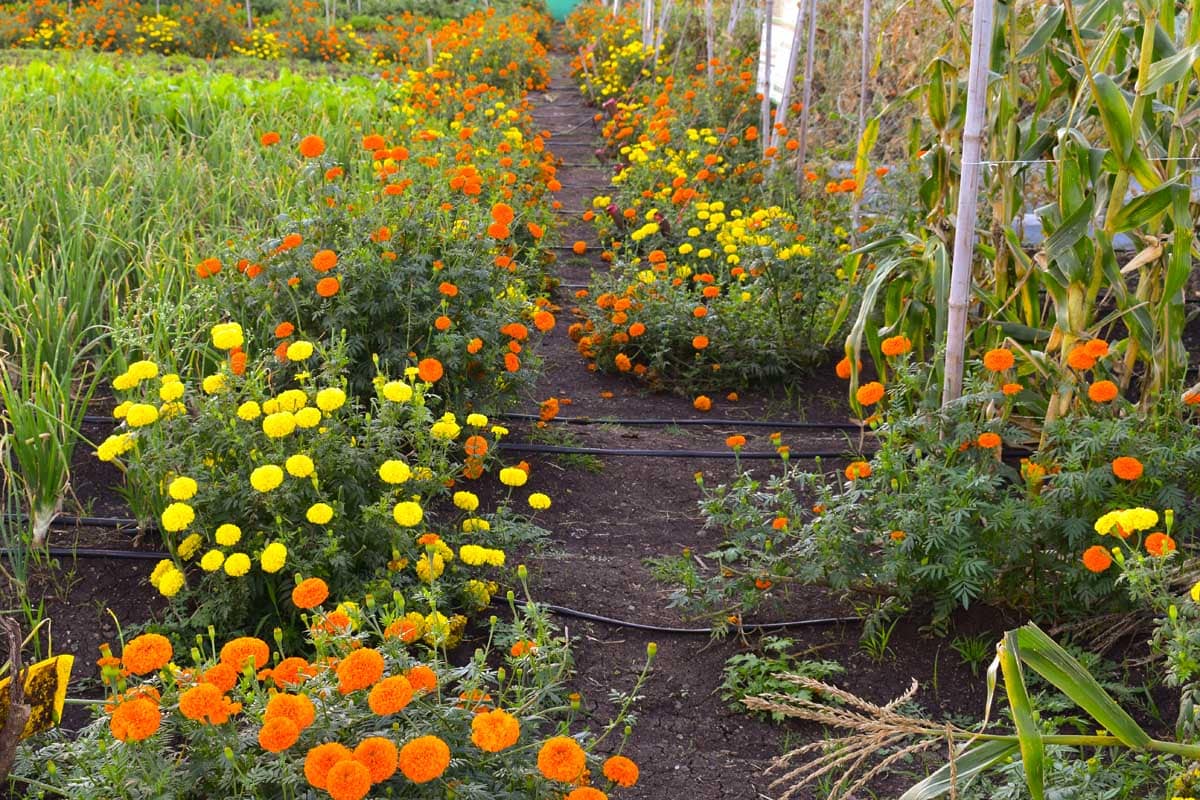Wormwood: The Insectrepelling Herb That Grows Well With
Wormwood (Artemisia absinthium) is a perennial herb that has been used for centuries for its medicinal and insecticidal properties. It is a member of the Asteraceae family, which also includes other common herbs such as chamomile, yarrow, and sunflowers. Wormwood is native to Europe and Asia, but it is now grown in many parts of the world.
Wormwood is a tall, bushy plant with silvery-green leaves. It has a strong, bitter taste and aroma. The leaves and flowers of wormwood contain a number of volatile oils, including thujone, absinthium, and artemisia. These oils are responsible for the plant's insecticidal and medicinal properties.
Insecticidal Properties
Wormwood has been used for centuries to repel insects. The strong aroma of the plant is unpleasant to many insects, and the volatile oils can kill or paralyze them. Wormwood is particularly effective against mosquitoes, flies, and moths.
In recent years, there has been growing interest in the use of wormwood as a natural insecticide. Studies have shown that wormwood extract can be effective against a variety of insect pests, including mosquitoes, bed bugs, and cockroaches.
Medicinal Properties
Wormwood has a long history of use in traditional medicine. It has been used to treat a variety of ailments, including digestive problems, fever, and worm infestations. The plant contains a number of compounds that have anti-inflammatory, antioxidant, and antimicrobial properties.
Wormwood is also a bitter tonic that can stimulate the appetite and digestion. It has been used to treat nausea, vomiting, and diarrhea. The plant also contains compounds that can help to relieve pain and inflammation.
Safety
Wormwood is generally safe when used in moderation. However, it can be toxic in high doses. Thujone, one of the volatile oils in wormwood, can cause seizures and other health problems. For this reason, it is important to use wormwood products in moderation and to avoid them altogether if you are pregnant or breastfeeding.
Companion Planting
Wormwood is a good companion plant for a number of other herbs and vegetables. It is especially effective at repelling pests such as mosquitoes, flies, and moths. Wormwood can also be used to make a natural insecticide that can be sprayed on plants to protect them from pests.
Some of the best companion plants for wormwood include:
- Carrots
- Celery
- Onions
- Leeks
- Sage
- Rosemary
- Lavender
- Marigolds
Growing Wormwood
Wormwood is a relatively easy plant to grow. It prefers full sun and well-drained soil. The plant can be propagated from seed or from cuttings. Wormwood is drought-tolerant and can be grown in a variety of climates.
Harvesting Wormwood
The leaves and flowers of wormwood can be harvested throughout the growing season. The leaves can be dried for use in teas or tinctures. The flowers can be used to make a natural insecticide.
Conclusion
Wormwood is a versatile herb that has a number of uses. It can be used as an insect repellent, a medicinal tonic, or a flavoring agent. Wormwood is a relatively easy plant to grow and can be grown in a variety of climates. If you are looking for a plant that can help to keep pests away and improve your health, wormwood is a good option.
Wormwood is a versatile herb that can be used for a variety of purposes, including pest control, medicinal applications, and flavoring. When it comes to companion planting, wormwood can be a bit of a double-edged sword. While it can be helpful in deterring some pests, it can also inhibit the growth of other plants.
If you're considering planting wormwood in your garden, it's important to do your research and choose companion plants that will thrive in its presence. Some good options include carrots, onions, leeks, sage, and rosemary. These plants will not be affected by the wormwood's growth-inhibiting properties, and they may even benefit from its pest-repellent qualities.
For more information about wormwood companion plants, I recommend visiting Gardenia Inspiration. This website has a comprehensive list of plants that are compatible with wormwood, as well as tips on how to grow and care for this herb.
FAQ of wormwood companion plant
5 Most Frequently Asked Questions About Wormwood Companion Plants
Wormwood (Artemisia absinthium) is a hardy perennial herb that is native to Europe and Asia. It has a long history of medicinal and culinary use, and is also known for its insect-repelling properties. Wormwood can be grown as a standalone plant, but it also makes a great companion plant for other herbs and vegetables.
Here are the 5 most frequently asked questions about wormwood companion plants, along with some valuable insights and solutions:
1. What are good companion plants for wormwood?
Wormwood is a beneficial companion plant for a variety of other herbs and vegetables. Some good companion plants for wormwood include:
- Carrots: Wormwood helps to repel carrot fly, a common pest of carrots.
- Cucumbers: Wormwood helps to repel cucumber beetles, another common pest of cucumbers.
- Onions: Wormwood helps to repel onion maggots, a common pest of onions.
- Potatoes: Wormwood helps to repel Colorado potato beetle, a common pest of potatoes.
- Squash: Wormwood helps to repel squash bugs, a common pest of squash.
2. What are the benefits of planting wormwood with other plants?
In addition to repelling pests, wormwood also has a number of other benefits when planted with other plants. These benefits include:
- Attracting beneficial insects: Wormwood attracts a variety of beneficial insects, such as ladybugs, hoverflies, and parasitic wasps. These insects help to control pest populations in the garden.
- Improving soil quality: Wormwood's deep roots help to improve soil drainage and aeration. They also release nutrients into the soil, which can benefit other plants.
- Disguising the scent of other plants: Wormwood has a strong, bitter scent that can mask the scent of other plants. This can be beneficial for plants that are susceptible to pests that are attracted to scent, such as cabbage moths.
3. How far apart should wormwood plants be planted?
Wormwood plants should be planted about 2-3 feet apart. This will give them enough space to grow and spread.
4. What is the best time of year to plant wormwood?
Wormwood can be planted in the spring or fall. If you are planting in the spring, wait until the soil has warmed up to at least 60 degrees Fahrenheit. If you are planting in the fall, plant before the first frost.
5. How do I care for wormwood plants?
Wormwood plants are relatively low-maintenance. They need full sun and well-drained soil. Water them regularly, especially during hot, dry weather. Wormwood plants do not need to be fertilized.
Image of wormwood companion plant
- Chives: Chives are a great companion plant for wormwood because they help to repel pests. They also have similar growing requirements, so they can be planted together without any problems.

- Cucumbers: Cucumbers and wormwood are both members of the Apiaceae family, so they benefit from each other's presence. Wormwood helps to repel pests that can damage cucumbers, and cucumbers help to improve the flavor of wormwood.

- Lavender: Lavender is a beautiful and fragrant plant that can also help to repel pests. It is a good companion plant for wormwood because it has similar growing requirements and can help to improve the flavor of wormwood.

- Marigolds: Marigolds are another great companion plant for wormwood because they help to repel pests. They also have similar growing requirements, so they can be planted together without any problems.

- Pot marigolds: Pot marigolds are a type of marigold that is especially good for repelling pests. They are a good companion plant for wormwood because they have similar growing requirements and can help to improve the flavor of wormwood.

Post a Comment for "Wormwood: The Insectrepelling Herb That Grows Well With"